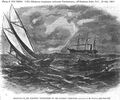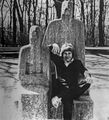Template:Selected anniversaries/July 22: Difference between revisions
No edit summary |
No edit summary |
||
| (20 intermediate revisions by the same user not shown) | |||
| Line 1: | Line 1: | ||
<gallery> | <gallery> | ||
||Francesco Maurolico | ||1575: Francesco Maurolico dies ... mathematician and astronomer. He made contributions to the fields of geometry, optics, conics, mechanics, music, and astronomy. Pic. | ||
||1694: Johann Bernoulli sends "L'Hospital's rule" to L'Hospital under the terms of their agreement of 17 March 1694. Pic. | ||1694: Johann Bernoulli sends "L'Hospital's rule" to L'Hospital under the terms of their agreement of 17 March 1694. Pic. | ||
|| | ||1711: Georg Wilhelm Richmann born ... physicist and academic. He proved that thunder clouds contain electric charge. Pic. | ||
|| | ||1755: Gaspard de Prony born ... mathematician and engineer, worked on hydraulics. Pic. | ||
|| | ||1784: Friedrich Bessel born ... mathematician and astronomer. Pic. | ||
|| | ||1795: Gabriel Lamé born ... mathematician who contributed to the theory of partial differential equations by the use of curvilinear coordinates, and the mathematical theory of elasticity. Pic. | ||
|| | ||1802: Marie François Xavier Bichat dies ... anatomist and physiologist. | ||
File:Giuseppe Piazzi.jpg|link=Giuseppe Piazzi (nonfiction)|1826: Priest, mathematician, and astronomer [[Giuseppe Piazzi (nonfiction)|Giuseppe Piazzi]] dies. He discovered dwarf planet Ceres. | File:Giuseppe Piazzi.jpg|link=Giuseppe Piazzi (nonfiction)|1826: Priest, mathematician, and astronomer '''[[Giuseppe Piazzi (nonfiction)|Giuseppe Piazzi]]''' dies. He discovered the dwarf planet Ceres. | ||
File:Niles Cartouchian.jpg|link=Niles Cartouchian|1827: Gem detective and astronomer [[Niles Cartouchian]] discovers [[Time crystal (nonfiction)|time crystals]] on the dwarf planet Ceres. | File:Niles Cartouchian.jpg|link=Niles Cartouchian|1827: Gem detective and astronomer '''[[Niles Cartouchian]]''' discovers [[Time crystal (nonfiction)|time crystals]] on the dwarf planet Ceres. | ||
File:Sir Sandford Fleming.jpg|link=Sandford Fleming (nonfiction)|1827: Engineer and inventor [[Sandford Fleming (nonfiction)|Sandford Fleming]] dies. He proposed worldwide standard time zones. | File:Sir Sandford Fleming.jpg|link=Sandford Fleming (nonfiction)|1827: Engineer and inventor '''[[Sandford Fleming (nonfiction)|Sandford Fleming]]''' dies. He proposed worldwide standard time zones. | ||
| | File:Capture of the Enchantress by the US Albatross.jpg|1861: Capture of the ''Enchantress'' by the ''US Albatross''. | ||
|| | ||1869: John A. Roebling dies ... engineer, designed the Brooklyn Bridge. Pic. | ||
|| | ||1882: Konrad Knopp born ... mathematician who worked on generalized limits and complex functions. Pic. | ||
|| | ||1887: Gustav Ludwig Hertz born ... physicist and academic, Nobel Prize laureate. Pic. | ||
|| | ||1888: Selman Waksman born ... biochemist and microbiologist, Nobel Prize laureate. Pic (lab!). | ||
|| | ||1893: John Rae dies ... physician and arctic explorer ... surgeon who explored parts of northern Canada, found the final portion of the Northwest Passage (Rae Strait) and reported the fate of Sir John Franklin's lost expedition. In 1846–47 he explored the Gulf of Boothia northwest of Hudson Bay. In 1848–51 he explored the Arctic coast near Victoria Island. In 1854 he went from Boothia to the Arctic coast and learned the fate of Franklin. He was noted for physical stamina, skill at hunting and boat handling, use of native methods and the ability to travel long distances with little equipment while living off the land. Pic. | ||
|| | ||1902: Reinhold Baer born ... mathematician, known for his work in algebra. He introduced injective modules in 1940. He is the eponym of Baer rings and Baer groups. Pic. | ||
|| | ||1907: Edgar Raymond Lorch born ... mathematician. Described by The New York Times as "a leader in the development of modern mathematics theory" Pic: http://www-history.mcs.st-andrews.ac.uk/PictDisplay/Lorch_Ray.html | ||
|| | ||1915: Sandford Fleming dies ... engineer and inventor, developed Standard time. | ||
||1917: Edouard Sarasin dies ... independent scientist in Geneva. Born in a wealthy family, he established a private laboratory where he collaborated with other researchers. His studies included those on the properties of waves, resonance, radiowaves, radiation and geophysics. | |||
|| | ||1926: Gerald Edward "Gerry" Brown born ... American theoretical physicist who worked on nuclear physics and astrophysics. | ||
|| | ||1930: Shreeram Shankar Abhyankar born ... mathematician known for his contributions to algebraic geometry. He, at the time of his death, held the Marshall distinguished professor of mathematics chair at Purdue University, and was also a professor of computer science and industrial engineering. He is known for Abhyankar's conjecture of finite group theory. His latest research was in the area of computational and algorithmic algebraic geometry. Pic. | ||
|| | File:Reginald Fessenden.jpg|link=Reginald Fessenden (nonfiction)|1932: Inventor '''[[Reginald Fessenden (nonfiction)|Reginald Fessenden]]''' dies. He performed pioneering experiments in radio, including the use of continuous waves and the early—and possibly the first—radio transmissions of voice and music. | ||
|| | ||1935: John Robert Stallings Jr. born ... mathematician known for his seminal contributions to geometric group theory and 3-manifold topology. Pic. | ||
||William | ||1938: Ernest William Brown dies ... mathematician and astronomer, who spent the majority of his career working in the United States and became a naturalised American citizen in 1923. His life's work was the study of the Moon's motion (lunar theory) and the compilation of extremely accurate lunar tables. He also studied the motion of the planets and calculated the orbits of Trojan asteroids. Pic. | ||
|| | ||1942: The United States government begins compulsory civilian gasoline rationing due to the wartime demands. | ||
File:Henrietta Bolt.jpg|link=Henrietta Bolt|1962: Engineer, pilot, and alleged time- | ||1942: Holocaust: The systematic deportation of Jews from the Warsaw Ghetto begins. | ||
||1943: William Fogg Osgood dies ... mathematician. Pic. | |||
||1950: Vyacheslav Stepanov dies ... mathematician, specializing in analysis. Pic. | |||
File:Henrietta Bolt.jpg|link=Henrietta Bolt|1962: Engineer, pilot, and alleged time-traveler '''[[Henrietta Bolt]]''' tries to warn NASA that [[Mariner 1 (nonfiction)|Mariner 1]] has been targeted by [[math criminals]]. | |||
File:Atlas_Agena_with_Mariner_1.jpg|link=Mariner 1 (nonfiction)|1962: Mariner program: [[Mariner 1 (nonfiction)|Mariner 1]] spacecraft flies erratically several minutes after launch and has to be destroyed. | File:Atlas_Agena_with_Mariner_1.jpg|link=Mariner 1 (nonfiction)|1962: Mariner program: [[Mariner 1 (nonfiction)|Mariner 1]] spacecraft flies erratically several minutes after launch and has to be destroyed. | ||
||2000 | File:Karl Koch 1985.jpg|link=Karl Koch (nonfiction)|1965: Computer hacker '''[[Karl Koch (nonfiction)|Karl Koch]]''' born. Koch will be a cold war computer hacking incident involved in selling hacked information from United States military computers to the KGB. His death by fire will be ruled a suicide. | ||
||1995: Otakar Borůvka dies ... mathematician best known today for his work in graph theory. Pic. | |||
||2000: Raymond Lemieux dies ... chemist and academic. Pic. | |||
||2016: Ursula Franklin dies ... research physicist and metallurgist. Franklin is best known for her writings on the political and social effects of technology. For her, technology was much more than machines, gadgets or electronic transmitters. It was a comprehensive system that includes methods, procedures, organization, "and most of all, a mindset". She distinguished between holistic technologies used by craft workers or artisans and prescriptive ones associated with a division of labour in large-scale production. Pic. | |||
</gallery> | </gallery> | ||
Latest revision as of 11:17, 7 February 2022
1826: Priest, mathematician, and astronomer Giuseppe Piazzi dies. He discovered the dwarf planet Ceres.
1827: Gem detective and astronomer Niles Cartouchian discovers time crystals on the dwarf planet Ceres.
1827: Engineer and inventor Sandford Fleming dies. He proposed worldwide standard time zones.
1932: Inventor Reginald Fessenden dies. He performed pioneering experiments in radio, including the use of continuous waves and the early—and possibly the first—radio transmissions of voice and music.
1962: Engineer, pilot, and alleged time-traveler Henrietta Bolt tries to warn NASA that Mariner 1 has been targeted by math criminals.
1962: Mariner program: Mariner 1 spacecraft flies erratically several minutes after launch and has to be destroyed.
1965: Computer hacker Karl Koch born. Koch will be a cold war computer hacking incident involved in selling hacked information from United States military computers to the KGB. His death by fire will be ruled a suicide.







